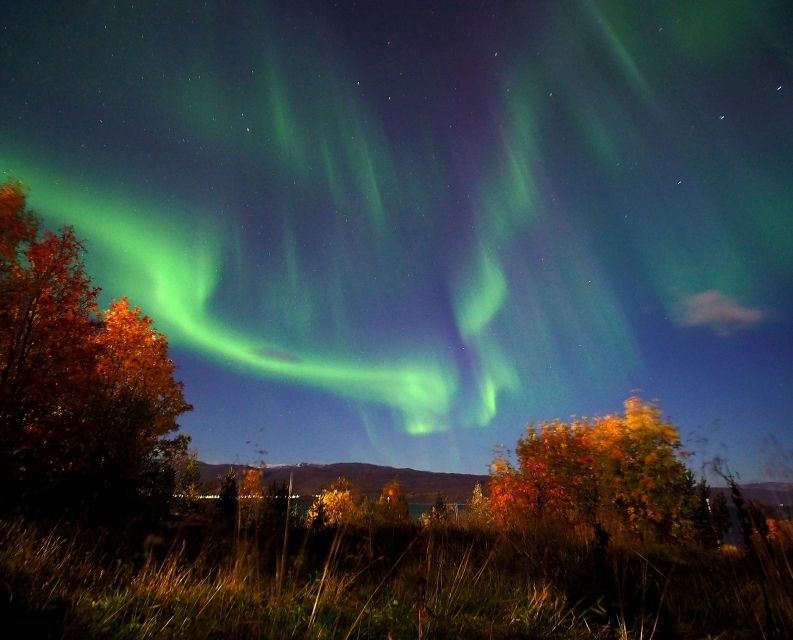Aurora Borealis in Alta
Did you know that Northern Norway is your go-to destination for experiencing the captivating the northern lights in Alta (Norway)? These colorful lights, also called Aurora Borealis, paint the sky with shades of green, purple, and blue. From October to mid-April, visitors in Alta can see this breathtaking natural wonder.
Enjoy the best northern light tours in Alta
About this activity
Highlights
– Hunt for the northern lights!
– Experience the local history and culture.
– Take amazing photographs of the Aurora lights.
Free cancellation
– Cancel up to 24 hours in advance for a full refund
Duration
– 4 hours
Tours provided in
– Norwegian, English
Small group
– Limited to 13 participants
Best time to see the northern lights in Alta?
The best time to see the Northern Lights in Alta is from October to mid April. This period offers longer nights with darker skies, which are ideal conditions for viewing the aurora borealis. Additionally, Alta’s location within the Arctic Circle enhances the chances of seeing the Northern Lights.
It’s worth noting that weather conditions, such as clear skies and low light pollution, also play a significant role in visibility.
Tips for northern lights photography
In this chapter, we explore Alta’s Arctic wilderness with our cameras. We aim to capture the enchanting Northern Lights. We’ll learn about the gear and techniques needed and find out the best times and places to photograph the aurora. Let’s dive into the world of Northern Lights photography together!
1. Use a wide-angle lens: The Northern Lights can stretch across the sky, so a wide-angle lens will help you capture the full breadth of this mesmerizing display.
2. Tripod stability: Ensure your camera is steady by using a sturdy tripod. This minimizes shake during long exposure shots, resulting in sharper images.
3. Fast shutter speed: The Northern Lights may move subtly or dance quickly, so opt for a fast shutter speed to freeze their motion. Aim for at least 10-15 seconds to capture crisp details.
4. Experiment with ISO: Start with a low ISO setting, such as ISO 800, to reduce noise in your images. Increase it gradually if needed to brighten the scene without compromising quality.
5. Manual focus: Set your lens to manual focus and adjust it to infinity (∞) to ensure sharpness in your shots. Alternatively, focus on a distant object like a tree or mountain illuminated by the lights.
6. Shoot in RAW: Preserve the maximum amount of detail and flexibility for editing by capturing images in RAW format. This allows for adjustments to exposure, white balance, and more during post-processing.
7. Frame your shot: Incorporate interesting foreground elements, such as trees, mountains, or reflections on water, to add depth and context to your Northern Lights photos.
8. Experiment with exposure: Bracket your shots by varying exposure settings slightly to capture different aspects of the auroras, from subtle glows to vibrant bursts of color.
9. Stay patient and observant: Northern Lights activity can be unpredictable, so be prepared to wait for the perfect moment. Keep an eye on the sky and be ready to capture the auroras as they unfold.
10. Enjoy the experience: While capturing stunning photos is rewarding, don’t forget to take a moment to simply enjoy the beauty of the Northern Lights. Take in the awe-inspiring spectacle and appreciate the wonder of nature’s light show.
By following these tips and techniques, you’ll be well-equipped to capture breathtaking photographs of the Northern Lights and create lasting memories of this extraordinary natural phenomenon.

